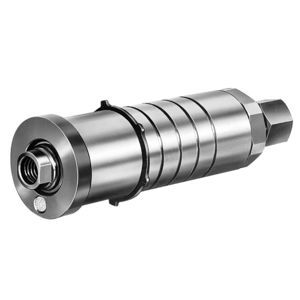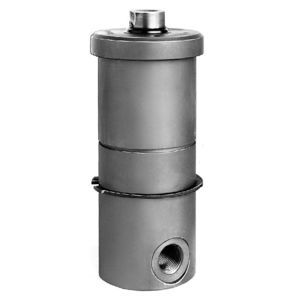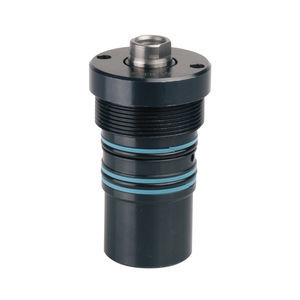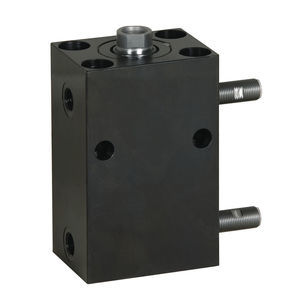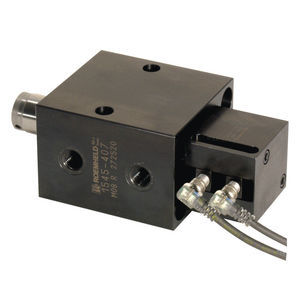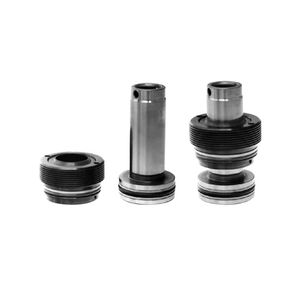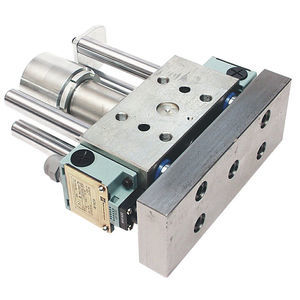
- Power Transmission - Mechanical components
- Actuator and Positioning System
- Hydraulic cylinder
- Römheld GmbH Friedrichshütte
Threaded body cylinder B1.309hydraulicpistondouble-acting

Add to favorites
Compare this product
Characteristics
- Type
- hydraulic
- Technology
- piston
- Configuration
- double-acting, spring-return
- Applications
- clamping
- Other characteristics
- threaded body
- Stroke
Max.: 100 mm
(3.937 in)Min.: 8 mm
(0.315 in)- Pressure
Max.: 500 bar
(7,251.9 psi)Min.: 0 bar
(0 psi)- Rod diameter
16 mm, 25 mm, 32 mm, 40 mm
(1 in, 1 in, 1 in, 2 in)- Force
Max.: 156 kN
Min.: 10 kN
Description
Universal cylinders
Advantages
● 6 piston diameters from 16 up to 63 mm
● 3 different strokes per size
● Sealing with very little leakage
● Alternatively single acting with spring return or double acting
● Connecting thread at the cylinder bottom
● Axial regulation due to external thread
● Lock nuts as per DIN 1804 can be used
● Space-saving fixing in fixture walls
● Swarf-protected tubing is possible
● Piston rod with internal thread for fixing of different contact bolts
The threaded-body universal cylinders are delivered with the same piston diameters and strokes as the well-proven block cylinders. Hydraulic connection is exclusively effected at the cylinder bottom by hydraulic tubes or hoses. Sealing of the case-hardened piston rod is made by a tandem sealing with minimum leakage and a wiper.
with external thread
single acting with spring return
double acting
max. operating pressure 500 bar
piston diameter: 16 - 63 mm
rod diameter: 10 - 40 mm
Stroke: 8 - 100 mm
max. push force: 10 - 156 kN
Catalogs
No catalogs are available for this product.
See all of Römheld GmbH Friedrichshütte‘s catalogsExhibitions
Meet this supplier at the following exhibition(s):
Other Römheld GmbH Friedrichshütte products
Hydraulic cylinders
Related Searches
- ROEMHELD cylinder
- Actuator
- Linear actuator
- Electric actuator
- ROEMHELD double-acting cylinder
- ROEMHELD hydraulic cylinder
- ROEMHELD single-acting cylinder
- Compact cylinder
- Standard cylinder
- ISO cylinder
- Anodized aluminum cylinder
- ROEMHELD piston cylinder
- Lifting column
- Cylinder with piston rod
- Hydraulic actuator
- ROEMHELD clamping cylinder
- ROEMHELD threaded cylinder
- Telescopic lifting column
- Cylinder with adjustable cushions
- Short-stroke cylinder
*Prices are pre-tax. They exclude delivery charges and customs duties and do not include additional charges for installation or activation options. Prices are indicative only and may vary by country, with changes to the cost of raw materials and exchange rates.



